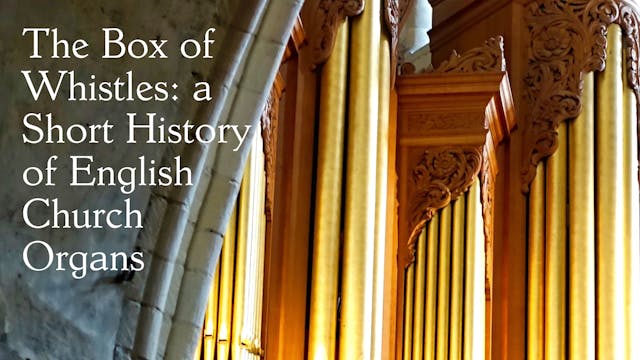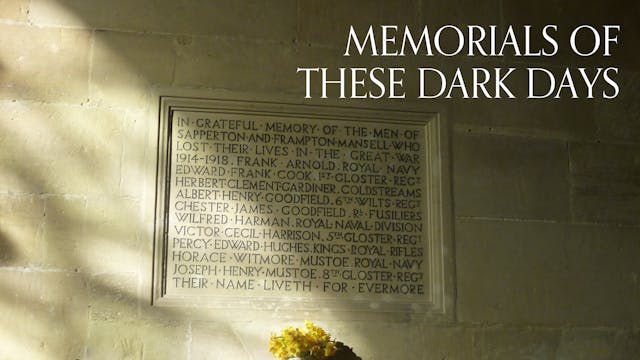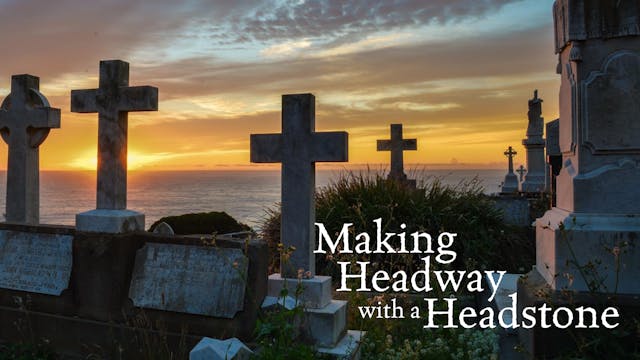Ghosts of Music, Shades of Light: The use of the Parish Church
Our Free Lectures
•
57m
By taking us through a normal day in the life of an average parish church, we will explore how medieval churches were used on a daily basis and why they were therefore designed and built as they were – and then why they were modified as time went on (an aspect that frequently puzzled Pevsner) because ceremonies and music became ever more elaborate. We'll discover that we can still signs of this in our medieval churches in England for ourselves, as we are guided round a ‘composite’ church you’ll learn how you can do this for yourself with a bit of imagination and some basic knowledge. This will add hugely to your experience of a church building, bringing it back to life irrespective of its architectural style(s), setting, or comparative poverty or affluence. Even what may seem at first glance to be the smallest and most modest of churches can show us something of their previously busy sonic and sun-lit lives. At the other end of the scale, a large and well-staffed town church in a port or market town was the arena for an unceasing round of many different activities, from dawn to dusk.
This talk is given by Martin Renshaw. Martin is a musician, born in Leicester to a curate’s house in Cardinal’s Walk, trained as a singer at St Paul's Cathedral 1955-59 under John Dykes-Bower, then as the Cantoris tenor lay clerk at Canterbury Cathedral 1970-77 with Allan Wicks, and has spent his professional life singing as soloist or in small ensembles for festivals and other concerts : three voices (Canterbury Clerkes), four voices (Quatuor Raspiev, in Russian but based in France) and the Maîtrise de Bretagne, the Ensemble Vocal de Nantes and small church choirs in France and (currently) in London. He also sang with Kent Opera in the 1970s and was a member of the core staff of Shepway Youth Opera in the 1980s.
He has an Oxford degree in the English, Latin and Anglo-Saxon Languages and Literature, and has written many articles and lectured on organ history and more recently on medieval church and social history (see his ground-breaking web-site : Soundmedieval.org) and has to date published three books, with two more currently being written. This is in addition to having spent all his life since a teenager restoring and making historically-based organs, and – when time allows - playing them too.
He has saved about 40 fine English organs by restoring and exporting them to continental countries, chiefly France. He is also a French citizen and lives in London, southern Tuscany or southern Brittany, according to where work and lockdowns take him and Dr Victoria Harding, his life and research partner. He is currently a member of the Council of the British Institute of Organ Studies and is setting up a small Trust to put historic organs in unexpected places.
Up Next in Our Free Lectures
-
The Box of Whistles: a short history ...
Pipe organs have been used in English parish churches for more than a thousand years. Early organs were often small and portable. Their use changed radically at the time of the Reformation. Later organs grew in size, becoming permanent features of church buildings with architectural casework and ...
-
Memorials of The Darks Days: Arts and...
The First World War saw an outpouring of grief like nothing England had seen before. Most communities had lost people, and all wanted a lasting memorial to those who were gone. It brought art to the forefront of the British public’s mind, and was thus a business opportunity like no other for arch...
-
Making Headway with a Headstone: How ...
For the dead who could afford a grave marker, the information chiseled or inscribed on them about the lives that lay beneath is often limited. Their name, birth, death, a short passage of poetry or a biblical except - and that's it. What about their favourite piece of music? Their favourite colou...



